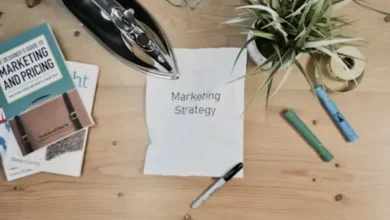Enterprise UX Fixes for WordPress Website

Enterprise WordPress sites often have major UX problems that have a direct effect on how well the business does.
Bounce rates can go up by more than 50% if pages take too long to load. Visitors will also leave if the navigation is hard to understand or the design is too crowded. This can make the brand look less trustworthy.
When these problems happen in business settings with a lot of traffic and complicated functions, they get worse.
To solve these UX problems, you need to carefully find the causes and then come up with focused solutions that strike a balance between form and function.
Businesses can turn their WordPress platforms into powerful tools that increase engagement, customer satisfaction, and ultimately business growth by making strategic changes to things like speed optimization, navigation design, mobile responsiveness, and accessibility standards.
Optimizing Site Performance for Enterprise Users
For business WordPress sites that get a lot of traffic and have a lot of complicated features, making sure they always work and load quickly is important.
Choosing a high-performance hosting environment with SSD storage, auto-scaling, and a content delivery network (CDN) to quickly send material all over the world is an important first step.
Browser, page, and object caching are all good ways to use caching to speed up content delivery and make servers less busy.
A big part of improving speed is making sure that media assets are optimized. Using modern formats like WebP, compressing images without losing quality, and lazy loading methods make sure that media files only load when they’re needed, which lowers the page’s initial weight.
Combining and minifying CSS, JavaScript, and HTML files also cuts down on the number of HTTP calls, which makes rendering faster.
Regular database maintenance keeps data retrieval running smoothly, which makes the system even more responsive and gives business users a smooth, fast browsing experience.
Solutions on Navigation for Complex Sites
Good guidance on a large scale WordPress websites need careful planning to make sure that users can easily find their way through a lot of information. In such cases, it’s beneficial to seek specialized web development assistance from companies like ITMonks, which have expertise in creating custom WordPress navigation solutions. Here are some practical approaches to consider:
- Design Clear Information Architecture: Set up a structure that makes sense and organizes business information into categories that make sense to users. This makes it easier for people to find what they need without having to think too hard.
- Simplify Menu Structures: It’s best not to make choices too complicated or deeply nested for users. Choose clear, eloquent labels and limit the number of menu items so that everything is clear without making it harder to get to important parts.
- Implement Sticky Menus: Users will be able to see the menu bars even as they scroll down long pages. With this useful function, you don’t have to scroll all the way back to the top to get to the navigation options.
- Use Pillar Content Organization: Build your site’s content around main hub pages that link to subtopics that are connected. This method makes it easy to find your way through a lot of business information while also improving search visibility.
- Maintain Consistent Navigation Patterns: Make sure that all of the site’s navigation features work the same way. This will give users a more consistent experience, which will boost their confidence and shorten the time it takes to learn new things.
Mobile Optimization for Enterprise WordPress Sites
For a competitive edge, enterprise WordPress sites must put mobile SEO first. First, pick a responsive, light theme that changes instantly to fit different screen sizes.
This will make sure that the site works the same way on phones and tablets.
Optimize pictures by serving them at the right size for each device and compressing them.
This will cut down on load times and bandwidth use by a large amount. Use lazy loading to put off-screen pictures until later, which speeds up the first page rendering.
Combine and minify CSS, JavaScript, and HTML files to make them smaller and make fewer HTTP calls. This will make mobile networks run faster.
Material delivery networks (CDNs) and caching strategies that work well on mobile devices can help you serve material quickly from servers close to users. To make it easier to use on small computers, make the menus and buttons bigger and touch-friendly.
Content Presentation and Visual Hierarchy
A strong visual hierarchy is needed to guide users and draw attention to important content on business WordPress websites that work well. Here are some things to think about:
- Typography: To make main points and calls to action stand out, use bigger headers and bold fonts.
- Color and Contrast: Use colors that are different from each other for buttons and important links to make them stand out while still staying true to your brand.
- Layout: Use clear sections, white space, and logical groupings to organize material so that users can quickly scan and find what they need.
- Visual Elements: Use pictures, icons, and infographics to break up the text and make important ideas stand out.
- Readability: To make material easy to read, use bullet points, short paragraphs, and subheadings.
Enterprise-Level Accessibility and Compliance
Accessibility and compliance are must-haves for business WordPress sites that affect both user experience and legal standing.
Choosing themes and plugins that were made with WCAG 2.2 AA guidelines in mind is the first step toward enterprise-level accessibility. This will give users with disabilities the basic help they need.
To make a website easy to read and work with screen readers, it needs semantic HTML, clear heading structures, and strong color contrast.
All images should have descriptive alt text, and all interactive elements, like forms and navigation menus, should be fully controllable by computer for people who have trouble moving their bodies.
Accessibility also includes multimedia material. For example, videos need accurate transcripts and captions so that people who have trouble hearing can watch them.
Businesses should regularly do both automated and manual accessibility checks, since adding new material can create new barriers.
Plugins like WP Accessibility and UserWay can help with common problems by adding features like settings for contrast and better keyboard navigation.
Making sure that accessibility is always a priority means setting up a specific accessibility workflow, making sure that everyone knows what their job is, and keeping track of compliance progress.
Businesses can lower their legal risk and make the internet a better place for everyone by incorporating these practices into their content and development processes.
Recommended: SerpEmpire vs SerpSEO: Comparing Organic Traffic Tools




